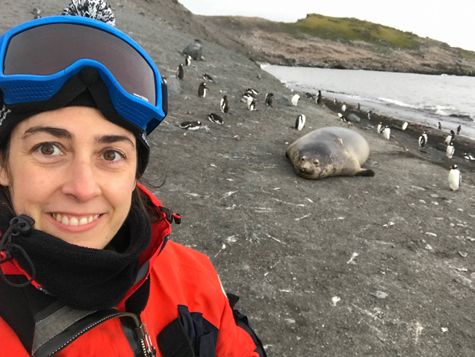Early Career Scientist Spotlight
Dr. Yasmina Martos (she/her/hers)
Earth and Planetary Scientist
Planetary Magnetospheres Laboratory (695)
What inspired you to pursue a career in Earth and Planetary Sciences?
Even when I was little, I was always very curious to know about where I live, our planet, the Solar System, and the Universe. My father fed me with this curiosity and at some point, I realized that I can study and learn about Earth and other planets every day if this is my job. Therefore, I decided I wanted to become a scientist! Exploring places has always been very exciting for me, and it is now also part of my job!
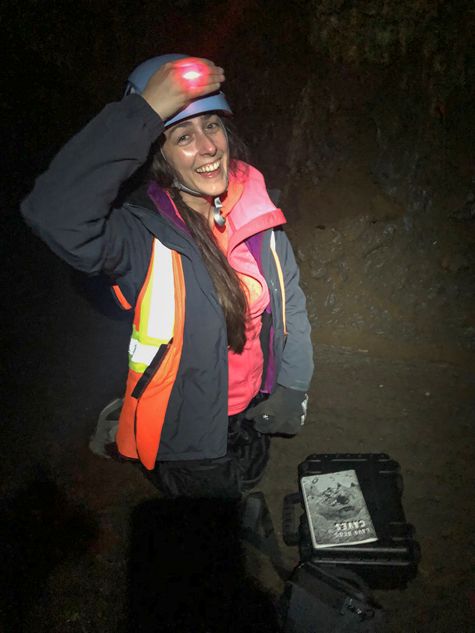
Credit: Dave Sheppard
What science questions do you investigate?
I mostly work towards understanding magnetic fields on Earth and on other planetary bodies such as Jupiter and Mars. Understanding these fields allows us to learn about the interior of planets, how they work, how they affect the planetary surface, and how a planet interacts with the rest of the Universe. The presence of a planetary magnetic field is crucial for the development and survival of life on the planetary surface as it protects living beings from harmful energetic particles coming from the Sun and the rest of the Universe.
Tell us about the research projects you are currently working on.
One of my main projects involves working as part of the magnetometer team of the Juno mission to Jupiter. I assist in monitoring the magnetic data coming from the spacecraft and I also investigate the interaction of Jupiter’s magnetic field with some of its larger moons such as Io and Ganymede. For example, by studying the radio waves detected by Juno we observed the interaction of Io with the magnetic field of Jupiter. This allowed us to learn about how the detection of these radio waves depends on the geometry of Jupiter’s magnetic field and the position of Io (to learn more about this study, visit https://www.nasa.gov/feature/goddard/2021/juno-jupiter-radio).
I also work on Earth’s polar regions (Antarctica and Greenland) to obtain knowledge about geodynamic evolution and what lies beneath the ice sheets. For this, I sometimes go to Antarctica to collect data on a research vessel to learn about oceanic spreading, the movement of continental blocks, and how this movement relates to the dynamics of the mantle or even climate change in Earth’s history. My profile picture for this article was taken in Lavington Island (Antarctica) in January 2022 during the latest expedition. In the case of Greenland, I study the heat coming from Earth’s interior and how it affects the base of the ice sheet. Studying this heat also helps us to understand the geodynamic history of Greenland (to learn more visit https://www.nasa.gov/feature/goddard/2018/nasa-scientist-reveals-details-of-icy-greenland-s-heated-geologic-past).
Additionally, I also participate in calibrating and testing instruments (magnetometers) that are built in our lab to make them ready to fly to space!
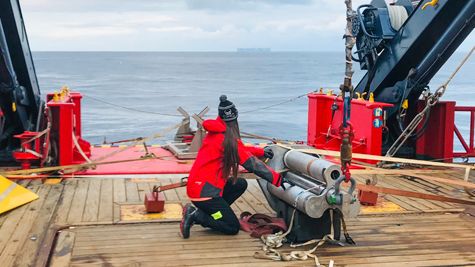
Credit: Manuel Catalan
What do you enjoy the most about your job?
As part of my job is about exploring and collecting data in places that humankind (or a spacecraft) has not been before, it is really exciting to be one of the first persons to have visited that part of our planet or to look at data from, for example, Jupiter, where a spacecraft hasn’t been before.
I also love interacting with the international community of scientists and engineers. This job is about team work. All the pieces of a team project are extremely important in order for a mission or expedition to be successful. A successful project allows us to make progress in gaining basic knowledge about how the universe works. The mutual support in my team at NASA is really amazing. Because I work in an international community, I am also grateful to learn about other colleague’s cultures and to share personal and professional experiences with them.
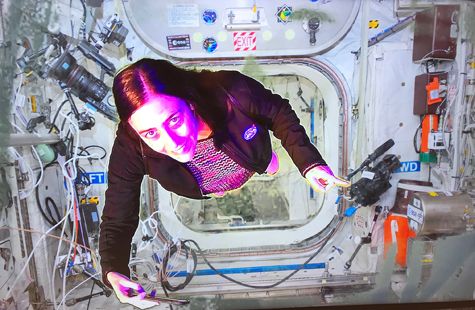
Credit: Yasmina Martos
What was your first big research achievement?
I think one of the most exciting moments of my career so far was during my PhD when, through years of research, I managed to demonstrate a hypothesis proposed 30 years earlier! This is a hypothesis proposed by Walter Alvarez (the same scientist who proposed the meteorite impact in Mexico that led to the dinosaurs’ extinction). We found that there is mantle material transferred from the Pacific to the Atlantic and we determined this using magnetic and gravity data. Now, I am working on demonstrating this in other parts of the planet.
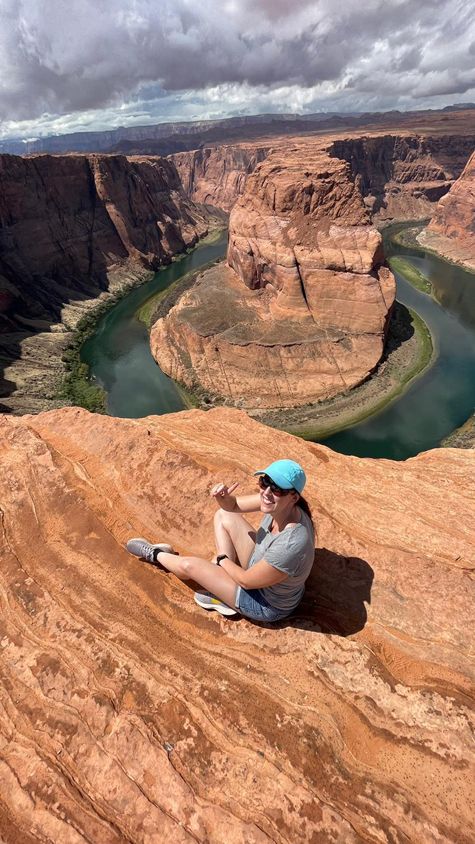
Credit: Yasmina Martos
What advice would you give your younger self?
Be persistent and patient. The future that you wish for may not come right away but with work and motivation you will get there. Spend your time doing what you enjoy doing and with who you enjoy and with who deserves your time. Do not be shy about contacting scientists from all over the planet. I would encourage myself to try to learn English when I was little. English is the language of science for communicating within an international community.

Credit: Yasmina Martos
What do you like to do in your free time?
I love roller skating in parks and along beach walks. I also find hiking, nature and adventure very exciting and I enjoy listening to music. Spending time with my family and friends is also very important to me.

Credit: Manuel Carrillo
Biography
Home Town:
Granada, Spain
Undergraduate Degree:
B.Sc. in Physics – Concentration in Earth’s Physics; Complutense University of Madrid (Spain)
Post-graduate Degrees:
M.Sc in Geophysics and Meteorology at the Complutense University of Madrid (Spain)
Ph.D in Earth Sciences at the University of Granada (Spain)
